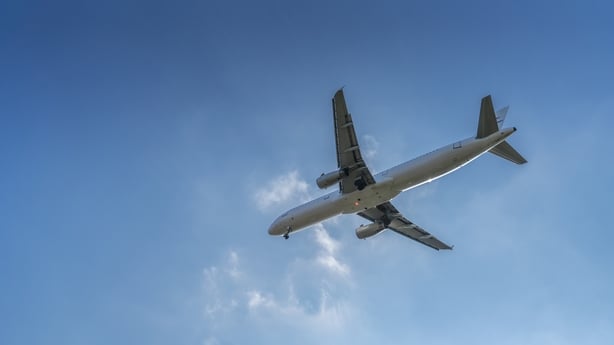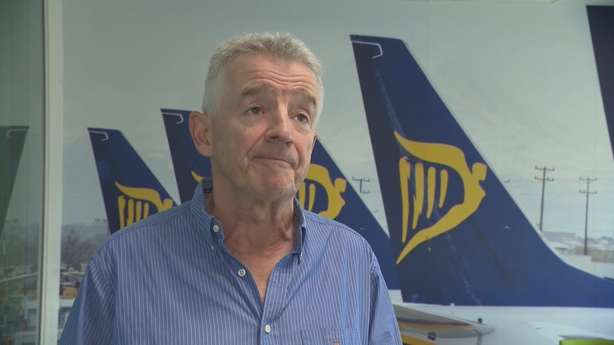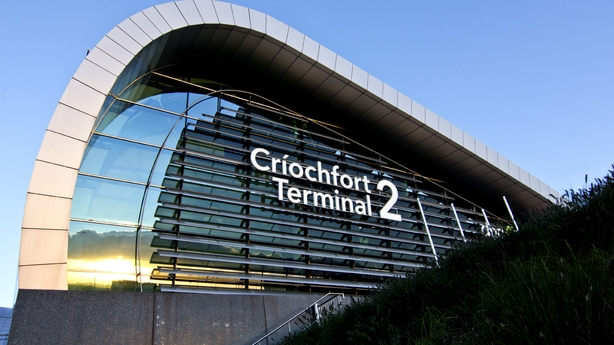The busy summer season is coming to a close at Dublin Airport.
On the face of it, it was a successful one for operator daa.
Between May and August, more than ten million passengers used the airport, 3.46m in August alone, which was a record high in its 84-year history.
However, despite the rapid post-Covid travel rebound for the airport, as well as the airlines and passengers and others who use it, there is little cause for celebration.
A crisis has erupted around the passenger cap, which has the potential to cause significant difficulties for all concerned.
The cap was imposed in 2007 as part of planning permission for the airport’s second terminal.
It limits the number who can use the facilities each year to 32m, due to concerns that were present at the time of its introduction about the capacity of surrounding roads.
The problem is, the cap has now been reached and daa recently revealed that it now expects it to be breached by up to a million passengers this year.
The exact consequences of that are not entirely clear, but enforcement proceedings by planning authorities against the State-owned and run airport cannot be ruled out.
The cap will be exceeded, principally for two reasons.
Fundamentally, daa admits it did not act early enough to apply for planning permission to have it increased, with the Covid-19 pandemic and the resulting plummeting passenger numbers an understandable factor in that.
It has now lodged a planning application for a €400m infrastructure plan which, if approved, would allow it to increase passenger numbers to 40 million a year.
However, that is going to take several years to wind its way through the planning system.
In the meantime, daa is preparing to lodge a separate planning application in November to temporarily increase the cap by a smaller amount, pending the outcome of the bigger plan.
However, that interim proposal will also likely take planners considerable time to consider.
The second reason for the cap being breached this year is that the aviation regulator, the Irish Aviation Authority (IAA), which is responsible for allocating take-off and landing slots at the airport, did not start to limit 2024 flights early enough.

For the first time ever, it has put in place a seat capacity limit of 14.4m for the upcoming winter season covering October to March.
That is expected to dampen the number of passengers using the facilities over those six months.
However, there was no limit on seat numbers over the summer and that means that taken together the combined passenger numbers over the two seasons are expected to breach the cap this year.
The difficulty for the airlines and passengers though is that now the IAA is proposing to not only limit but also reduce seat capacity next summer, in order to bring the number of passengers using Dublin Airport back in line with the cap.
In its draft proposal for the March to October 2025 summer season, published on Thursday, the IAA suggested a seat capacity limit of 25.2 million.
That is thought to be around 1 million fewer seats than were available this summer and again is the first time a restriction has been placed on summer aircraft slots and resulting seats.
Seat capacity is not the same as passenger numbers, because not every seat on every aircraft is filled on every flight.
The draft remains that and will go out to consultation over the next fortnight.
However, few expect there to be much if any change.
It is a huge problem for all those who want to see growth or at least a maintenance of current levels of air traffic at the airport.
Airlines who already use Dublin Airport and want to grow or add scheduled routes, by acquiring new slots, can not.
Those who want to lay on one-off or seasonal flights, for events like sporting fixtures or extra Christmas capacity, will not be able to.

Some carriers who do not already fly in and out of Dublin will be denied slots.
For passengers that will probably mean less choice of routes and the possibility of higher fares if supply is constrained amid rising demand.
The wider tourism and business community is worried too, because it might curtail the stuttering post-pandemic recovery of the sector and hurt Ireland’s attractiveness as a place to visit on holiday and to do business.
Despite all the noise around the issue, there is no quick fix in sight.
Earlier this week, the relatively new junior transport minister met an increasingly frustrated Ryanair boss Michael O’Leary, about the matter, as part of a round of “stakeholder engagement” being undertaken by James Lawless.
Michael O’Leary, well-known for his directness, said the meeting had not been productive.
He and Ryanair think Minister for Transport Eamon Ryan could temporarily resolve the problem with the stroke of a pen, by simply signing a letter (which Michael O’Leary helpfully wrote for him) directing the IAA to allow more winter and summer slots while planning permission for an increase in the cap is sought.
James Lawless said he would consider the suggestion but was not convinced it would fly, if you’ll pardon the pun, for legal and planning reasons.
His boss Eamon Ryan has been extremely reluctant to be dragged into the affair, arguing that politicians should stay out of the planning process – a convenient justification for a Green Party minister who may not want to be linked to action that would lead to higher aircraft emissions.
However, pressure is increasingly growing on the wider Government to do something.
Addressing an audience of business leaders at an Ibec event recently, Taoiseach Simon Harris said while he could not and will not intervene in the planning process, “that constraint should not prevent us from engaging on the solutions to protect connectivity and to protect jobs”.
He added that he planned to convene a “dialogue with key stakeholders” on planning for the future of Dublin Airport and indeed our regional airports.
Using regional airports to pick up the slack from Dublin while the cap remains in place is among the proposals made by James Lawless to deal with the issue.

With a serious face, he argued on Thursday that Ryanair is known for its marketing prowess and surely, in the same way it has successfully promoted secondary airports across Europe like Paris (Beauvais) and Venice (Treviso), it could sell flights to Dublin (Shannon).
A remark which Michael O’Leary poured scorn upon, adding that the majority of people who come to Ireland from abroad want to arrive and leave from Dublin – the city that is.
With few obvious, palatable and generally acceptable options on the table, the only route that seems open to get the issue resolved quickly is legal.
Daa has already asked the High Court to intervene in the IAA’s winter slots decision because it argues the regulator’s restrictions did not go far enough to allow it comply with the cap.
While Ryanair and Aer Lingus are both separately challenging the same IAA ruling in the courts, arguing the regulator does not have the power to limit the slots.
If Fingal County Council were to take enforcement action against daa over the breach of the cap this year, that could also end up in court.
Daa’s CEO Kenny Jacobs has suggested that ultimately, the matter may end up before the European courts over the next six months if a decision were required about whether the cap is actually a breach of European law.
Last November, the Dutch government scrapped a plan to cap flights at Schiphol Airport after the EU expressed serious concern about the proposal.
That followed the US government threatening retaliation if the Dutch went ahead with the plan because it allegedly violated the US-EU Air Transport Agreement.
The idea to cap the number of flights at Schiphol, one of Europe’s busiest hubs, had been primarily driven by the desire to cut noise pollution.
It has also been backed by environmentalists as needed to reduce carbon dioxide and nitrogen emissions.
Back in Ireland, both those arguments are being strongly proffered by those who support the retention of the cap.
On Thursday a group of protestors gathered outside Ryanair’s AGM in Dublin to call for the restriction to remain in place and to tell the airline to stop aggressively campaigning for it to be lifted.
“It is so damaging to our climate, it is causing greenhouse gas emissions, which are going out of control and for the sake of children we are here as parents, grandparents and concerned citizens to demand that Ryanair stop demanding that the cap is lifted,” said Angela Deegan, who was among the protesters.
While yesterday evening, local residents concerned about noise levels emanating from the airport also protested near the complex.
They will be anxiously awaiting another imminent planning ruling from An Bord Pleanála regarding a proposal by Dublin Airport to vary the permission for the second main runway to allow flights to start earlier in the morning and to run later at night.
It also wants a noise quota to replace a numerical cap on the number of night flights at Dublin.
Some local residents argue they are already suffering due to aircraft noise and any growth in flights, no matter what time of the day or night, would make their lives worse.
A recent report from the Aircraft Noise Competent Authority (Anca), found the number of people living near Dublin Airport exposed to high levels of night-time aircraft noise has “significantly increased”.
A headache for all concerned and yet another for an embattled daa.
Add to that a recent refusal by Fingal County Council for a daa plan to build a new staff car park, its ongoing challenges with passenger car park capacity and a recent decision by the IAA questioning the appropriateness of its planned passenger charges, and the problems just seem to mount for Dublin Airport and Kenny Jacobs.
A little over 18 months into the job, having inherited many of the problems, he must now be wondering when or even if his luck will eventually turn.
